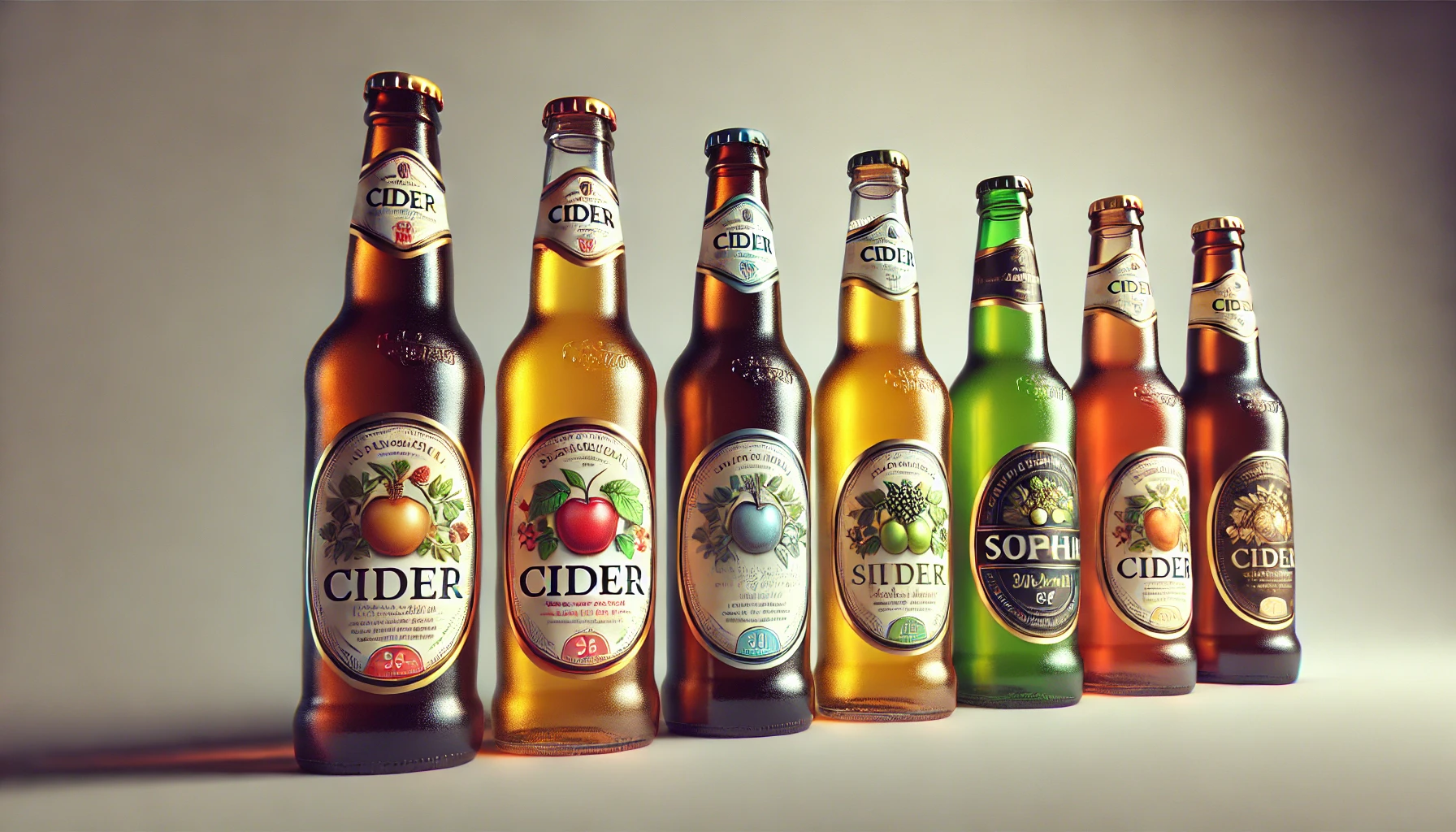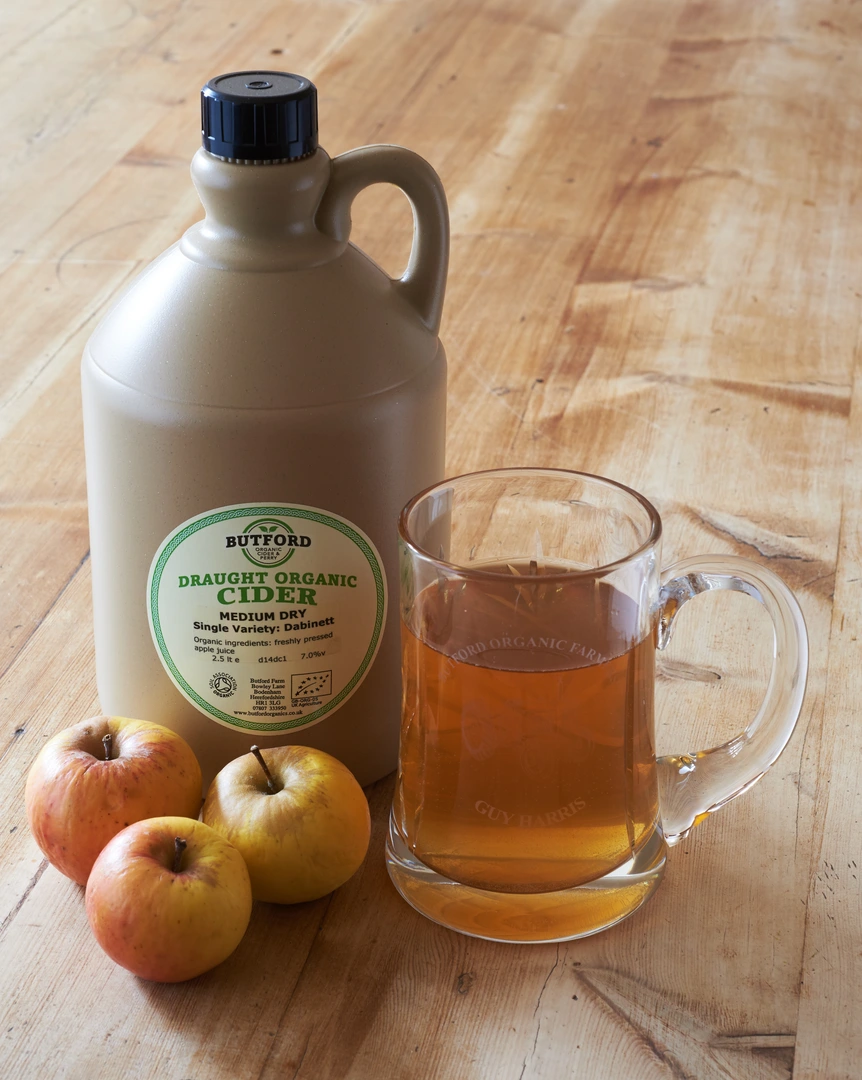The Basic Flavour Profiles of Cider
There are many types of cider available each with their own unique set of traits. A few of the main kinds are listed below:
Sweet Cider
Sweet cider is typically non-alcoholic and is characterised by its sugary taste. It’s often enjoyed by people of all ages and is especially popular in the autumn when freshly pressed from local orchards. Popular brands of sweet cider include Woodchuck, Angry Orchard, and Crispin.
Dry Cider
Dry cider contains little to no residual sugar, resulting in a tart, crisp taste. It is often preferred by those who enjoy a less sweet beverage with more complexity and depth. Some popular dry ciders are Magners, Strongbow, Blackthorn, and Butford Organics Yarlington Mill.
Sparkling Cider
Sparkling cider is carbonated, which gives it a fizzy texture similar to that of champagne. It can be either sweet or dry and is a popular choice for celebrations and special occasions.
Still Cider
Still cider, unlike sparkling cider, is not carbonated. This type of cider often has a smooth, rich flavour and is typically enjoyed in a relaxed, casual setting.
Each Cider and Perry below has a completely unique and distinct flavour and the whole range can be sampled during a cider tour.

Factors Influencing Cider’s Taste
Types of Apples Used
The type of apples used greatly influences the taste of cider. Bittersweet apples, tart apples, and even specific varieties like Honeycrisp or Granny Smith each contribute unique flavour notes.
The Fermentation Process
The fermentation process can also affect the taste. For instance, longer fermentation times can lead to more complex flavours, while shorter fermentation can retain more of the apple’s natural sweetness.
Added Spices and Flavours
Many ciders are enhanced with additional spices and flavours such as cinnamon, cloves, or even other fruits. These additions can create a warm, spiced flavour profile that is perfect for cooler months.
Comparing Different Cider Types
Traditional vs. Modern Ciders
Traditional ciders often use specific cider apple varieties and traditional fermentation methods, resulting in a more rustic and robust flavour. Modern ciders might experiment with different fruits, sweeteners, and carbonation levels to appeal to a broader audience.
Regional Variations
Cider flavours can vary significantly by region. English ciders, for instance, often have a bittersweet taste, while American ciders might be more tart and sweet. Understanding these regional differences can help you choose a cider that suits your taste preferences.
Alcoholic vs. Non-Alcoholic Ciders
Alcoholic ciders, or hard ciders, have undergone fermentation to convert sugars into alcohol. Non-alcoholic ciders, on the other hand, focus on the natural sweetness and tartness of the apples without the influence of alcohol.
How to Taste and Enjoy Cider
Tips for Tasting Cider
- Look: Observe the cider’s colour and clarity.
- Smell: Swirl the cider gently and inhale the aroma.
- Taste: Take a small sip and let it sit on your tongue to identify the different flavour notes.
- Evaluate: Consider the balance of sweetness, acidity, and any additional flavours.
Best Practices for Serving Cider
Cider is best served chilled, but not too cold, as excessive cold can mask the flavours. Use a wine glass or a traditional cider glass to fully appreciate the aroma and taste.
Pairing Cider with Food
Cider pairs well with a variety of foods. Sweet ciders complement desserts and spicy dishes, while dry ciders pair well with savoury foods like cheese, pork, and poultry.
Popular Cider Brands and Varieties
There are many well-known cider brands that offer a range of flavours and styles. Brands like Strongbow, Bulmers, and Butford Organics are popular choices. For those looking to explore different palates, there are numerous artisanal ciders available that offer unique and complex flavour profiles.
Health Benefits of Drinking Cider
Nutritional Benefits
Cider contains antioxidants and vitamins found in apples, which can contribute to overall health.
Potential Health Advantages
Moderate consumption of cider has been linked to improved digestion and a boost in immune health due to the presence of beneficial compounds like polyphenols.





